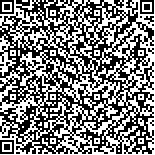高明明,恽晓萍,何泽佳,等.单丝皮肤阈值测验在中枢神经系统损伤后触觉障碍评定中的应用[J].中华物理医学与康复杂志,2022,44(7):615-620
扫码阅读全文

|
| 单丝皮肤阈值测验在中枢神经系统损伤后触觉障碍评定中的应用 |
|
| |
| DOI:10.3760/cma.j.issn.0254-1424.2022.07.009 |
| 中文关键词: 触觉阈值 定量感觉检测 中枢神经系统 |
| 英文关键词: Tactile thresholds Quantitative sensory testing Central nervous system |
| 基金项目:中国康复研究中心青年科研专项基金(2014-Q5) |
|
| 摘要点击次数: 4284 |
| 全文下载次数: 5556 |
| 中文摘要: |
| 目的 观察单丝皮肤阈值测验在中枢神经系统损伤所致触觉障碍患者中应用的效果。 方法 入组脑卒中及脊髓损伤患者各30例,对脑卒中患者双侧额部、面部、手掌及足背部以及脊髓损伤患者双侧L4、L5、S1部位的皮肤分别进行单丝阈值测验及棉签测试。初评结束后1周,对全部60例患者再进行一次与前一次单丝及棉签测试完全相同的测试,应用组内相关系数(ICC)对单丝及棉签的重测信度进行分析;应用诊断试验的一致性检验(Kappa值)比较单丝与棉签检测结果之间的一致性;应用逐步多元线性回归分析对单丝触觉阈值与患者年龄、身高、性别、组别、损伤类型以及损伤部位之间的关系进行分析。 结果 ①单丝的重测信度良好(ICC为0.74~0.95),均高于棉签(ICC为0.60~0.83);②单丝与棉签之间的Kappa值为0.550,表明两种测试结果的一致性较差;③多元线性回归分析结果显示,患者的损伤类型和损伤部位是触觉阈值的独立相关因素(R2=0.471,P<0.05),而年龄、身高、性别、组别与触觉阈值之间无明显相关关系(P>0.05)。 结论 单丝皮肤阈值测验的重测信度较高且优于传统棉签检测方法,适用于中枢神经系统损伤所致的触觉障碍。 |
| 英文摘要: |
| Objective To test the utility of monofilament cutaneous threshold testing among patients with impaired touch sensation caused by central nervous system injury. Methods Thirty stroke survivors and 30 patients with spinal cord injury were recruited. Monofilament threshold testing and cotton wool tests were performed on the bilateral forehead, face, palms and dorsum of feet among the stroke survivors. Among those with a spinal cord injury both tests were performed on each side of the L4, L5 and S1 vertebrae. One week later, all were retested. Intra-class correlation coefficients (ICCs) were used to quantify the test-retest reliability of the tests. Kappa values were calculated to determine the degree of agreement between them. Stepwise multiple linear regressions were evaluated to examine the relationship between touch perception thresholds and age, height, gender, type of injury and injured site. Results ①The ICC for the monofilament test was between 0.74 and 0.95, higher than that of the cotton wool test (ICC: 0.60 to 0.83). ②The kappa value between the monofilament and cotton wool tests was 0.550, indicating good agreement. ③The types of injury and injured sites were independent correlates of the touch perception thresholds, but there was no significant correlation between the touch perception thresholds and age, height, gender or group. Conclusions The monofilament cutaneous threshold test has good test-retest reliability, better than the cotton wool test. Therefore, it may be useful as a tool for assessing impaired touch sensation caused by central nervous system injury. |
|
查看全文
查看/发表评论 下载PDF阅读器 |
| 关闭 |
|
|
|